When is the best time to visit Rome? Answer is – The best times to visit Rome are during the shoulder seasons of spring (April-May) and fall (September-October). The weather is pleasant, ideal for sightseeing and outdoor activities. Crowds are smaller compared to the peak summer season, and you may find better deals on flights and accommodations. However, if you don’t mind the heat and crowds, summer can still be a great time to enjoy Rome’s vibrant energy. Winter offers a quieter experience and opportunities to witness Christmas and New Year’s festivities in the Eternal City.
Summary
- Rome’s weather patterns and how they affect the tourist experience across seasons.
- Peak tourist season vs. shoulder seasons – crowds, prices, and atmosphere.
- Special events and festivals happening in Rome throughout the year.
- Advantages and disadvantages of visiting Rome during different seasons.
- Tips for making the most out of your Rome trip regardless of the time of year.
When is the Best Time to Visit Rome?
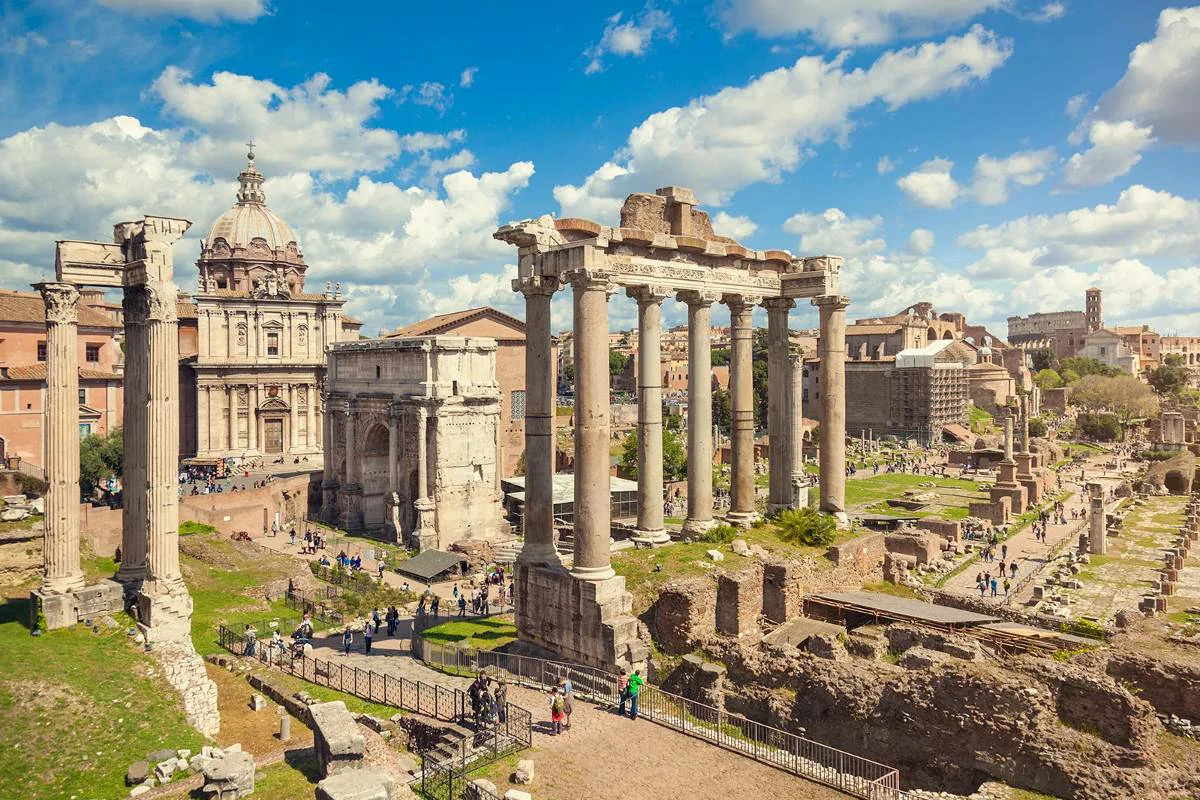
Why Rome is a Year-Round Destination
Rome, the Eternal City, exudes a timeless allure that draws visitors from every corner of the globe.
Its unique blend of ancient wonders, artistic masterpieces, vibrant culture, and delectable cuisine makes it a captivating destination regardless of the season.
But when considering the ideal time for your Roman adventure, it’s worth looking at why each season offers something special.
A Tapestry of History: Rome’s status as a cradle of civilization is undeniable. From the iconic Colosseum and the Roman Forum, where empires rose and fell, to the Pantheon, a marvel of ancient engineering – history whispers from every corner. These landmarks can be appreciated year-round, allowing you to step back in time no matter when you visit.
Artistic Immersion: Rome is a treasure trove for art lovers. The Vatican Museums house one of the world’s most impressive art collections, including Michelangelo’s Sistine Chapel ceiling. Masterpieces by Renaissance giants like Bernini and Caravaggio adorn churches and galleries throughout the city. The beauty of Rome’s artistic heritage transcends the seasons.
Culinary Delights: Italian cuisine is renowned worldwide, and Rome is a foodie’s paradise. From creamy gelato on a summer afternoon to a hearty bowl of pasta on a chilly winter evening, the city’s culinary scene delights year-round. Fresh produce from local markets inspires seasonal dishes, and cozy trattorias provide a warm welcome no matter the weather.
La Dolce Vita: There’s an undeniable charm to the Roman lifestyle. Locals embrace “la dolce vita” – the sweet life – with gusto. Whether it’s lingering over coffee in a piazza, strolling through vibrant markets, or enjoying an evening aperitivo, the infectious energy of everyday life in Rome is present throughout the year.
Mediterranean Climate: Rome benefits from a mild Mediterranean climate, with generally pleasant temperatures. Winters are relatively short and while summers can be hot, the evenings often bring a refreshing coolness, perfect for enjoying al fresco dining or a leisurely passeggiata (evening stroll).
Expert Insight:
“Rome is a city for all seasons. Each period reveals different aspects of its beauty. Winter unveils a quieter charm, while vibrant festivals and outdoor living mark the summer. The shoulder seasons are a personal favorite, offering the best of both worlds.” – Lucia Conti, Rome-based travel writer and historian.
Best Time to Visit Rome: A Season-by-Season Breakdown
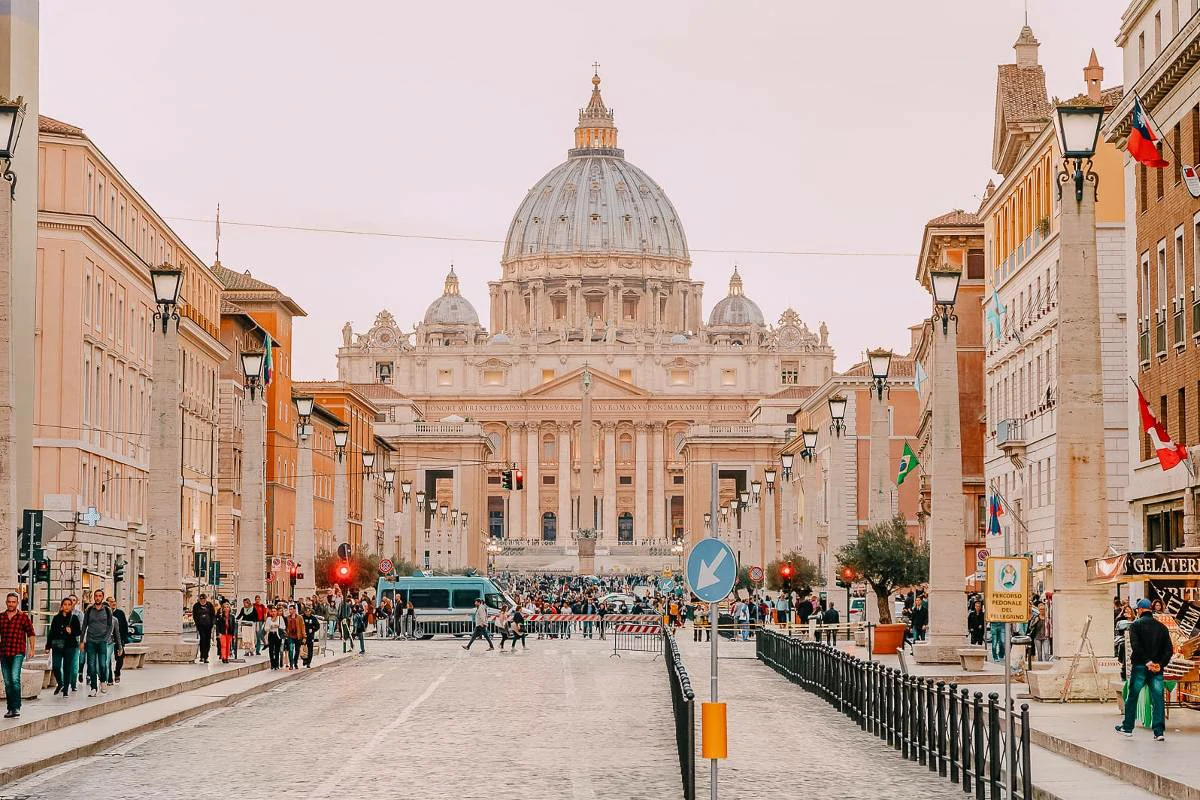
1. Spring (April – May)
Spring in Rome is a season of awakening. The city sheds its winter chill, blossoming with vibrant colors and a lively atmosphere.
This shoulder season offers a sweet spot for visitors, with comfortable weather, fewer crowds than summer, and a chance to witness the Eternal City in full bloom.
Weather in Rome during spring
Spring days in Rome are characterized by mild temperatures, with highs averaging between 60-75°F (15-24°C).
Expect plenty of sunshine, although the occasional rain shower is possible – pack an umbrella just in case! Evenings become refreshingly cool, perfect for enjoying an after-dinner stroll.
Springtime Events and Festivals
Springtime brings a calendar of exciting events and celebrations to Rome:
Settimana Santa (Holy Week) and Easter: Experience the deeply rooted traditions and religious ceremonies surrounding Easter in Rome, a particularly special time to be in the heart of Catholicism.
Rome’s Birthday (April 21st): The city celebrates its founding with parades, historical reenactments, and special openings of typically closed archaeological sites.
Festa della Primavera (Spring Festival): The iconic Spanish Steps become a colorful cascade of azaleas during this floral festival.
Open House Roma: A unique weekend where architecturally significant buildings, usually closed to the public, open their doors for free tours.
Why spring is a great time to visit Rome
Pleasant Weather: Ideal conditions for exploring Rome’s many outdoor attractions, strolling through picturesque gardens like the Villa Borghese, or enjoying a picnic lunch on the Tiber River.
Smaller Crowds: Enjoy major landmarks without the overwhelming crowds of peak season. This means shorter lines at attractions like the Vatican Museums and the Colosseum.
Shoulder Season Prices: Hotel rates and flights may be more affordable compared to the summer high season.
Outdoor Dining: As temperatures rise, locals and visitors alike embrace the Roman tradition of “al fresco” dining. Restaurants spill out onto charming cobblestone streets and piazzas, buzzing with cheerful chatter and the aroma of delicious food.
Alessandro Bianco Expert Opinion
“Spring is my favorite time in Rome. The city transforms with an infectious energy, and the weather is just perfect for exploring without the crowds or the summer heat.” – Alessandro Bianco, Rome-based tour guide.
2. Summer (June – August)
Summer in Rome is a season of vibrant energy, long sunny days, and a lively atmosphere that spills onto the streets late into the night.
It’s the peak tourist season, and the city’s iconic landmarks are abuzz with visitors. While summer offers its own charms, it’s essential to be prepared for the crowds and heat.
Weather in Rome during summer
Summer temperatures in Rome are typically hot and sunny, with average highs in the 80s°F (27-32°C) and sometimes reaching into the 90s°F (32°C+).
Humidity can also be higher, making it feel even warmer. While evenings tend to offer some cool down, nights can still be warm.
Summertime Events and Festivals
Rome’s summer calendar is packed with exciting outdoor events and festivals:
Lungo il Tevere: The banks of the Tiber River transform into a lively festival with food stalls, pop-up bars, live music, and markets.
Estate Romana (Roman Summer): A city-wide celebration with a diverse program of concerts, film screenings, open-air theater performances, and cultural events.
Opera at the Baths of Caracalla: Experience the magical atmosphere of operatic performances amidst the ruins of the ancient Roman baths.
Ferragosto (August 15th): Italy’s national summer holiday. While many locals leave the city, there are often special celebrations and fireworks.
The Pros and Cons of Visiting Rome in Summer
Pros:
- Long Days: The sun sets late, allowing you to make the most of your sightseeing.
- Outdoor Buzz: The city has a lively, festive atmosphere as everyone embraces the warm weather.
- Al Fresco Evenings: Enjoying long, leisurely dinners under the stars is a quintessential summer experience.
- Unique Events: Summer brings a vibrant calendar of open-air festivals and cultural events that you won’t find other times of year.
Cons:
- Crowds: Major attractions like the Vatican and the Colosseum can be extremely crowded, with long lines.
- Heat: The midday heat, especially in July and August, can be intense, making sightseeing more challenging.
- Higher Prices: Flights and accommodations reach their peak prices during the summer season.
- Local Closures: Some smaller restaurants and shops may close in August as locals head out for their summer vacations.
Francesca Rossi Expert Opinion
“If you can handle the crowds and heat, summer in Rome is an unforgettable experience. It’s a time when the city truly comes alive.” – Francesca Rossi, Rome-based travel blogger.
Tips for Managing Summer in Rome
- Plan Ahead: Book tickets for popular attractions in advance to skip the lines.
- Start Early: Beat the crowds and the heat by sightseeing during the morning hours.
- Embrace the Siesta: Take a break from midday sightseeing and enjoy a leisurely lunch or relax during the hottest part of the day.
- Stay Hydrated: Carry a water bottle and refill it at the many “nasoni” (public water fountains) throughout the city.
- Pack Light: Opt for cool, breathable fabrics like linen and cotton.
3. Fall (September – October)
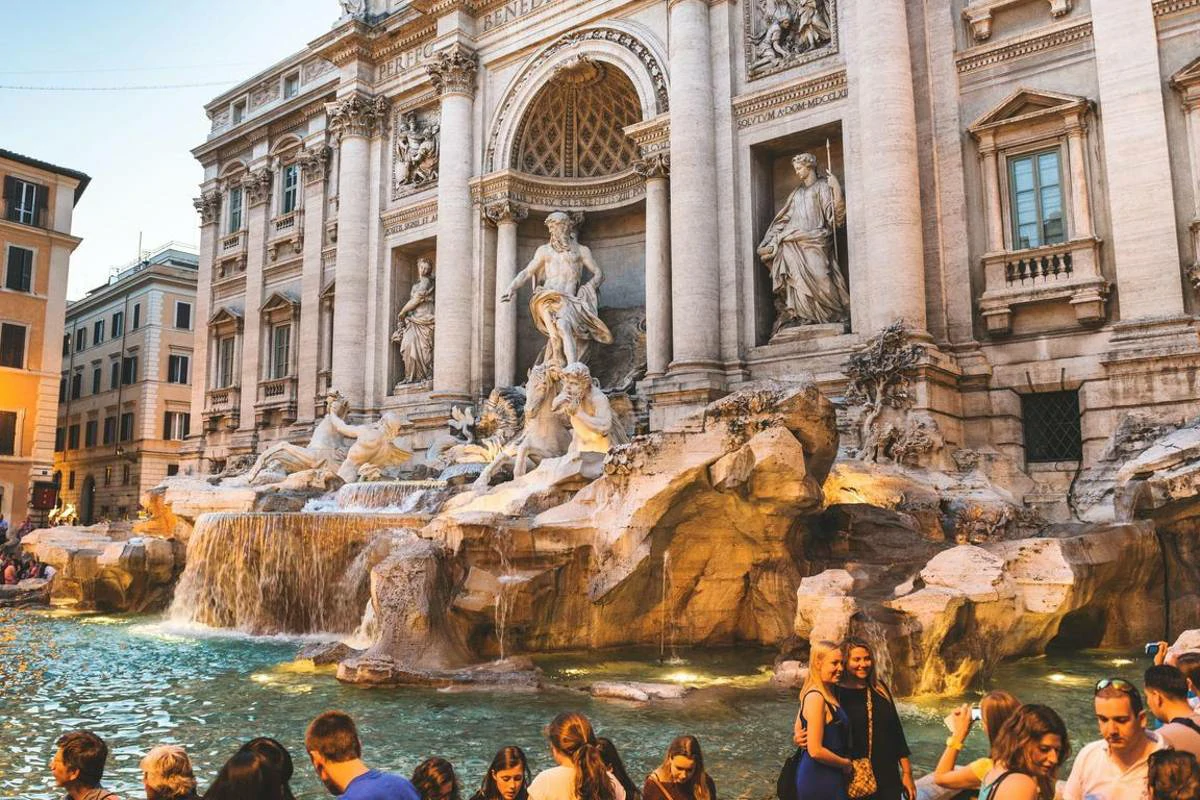
Fall in Rome is a delightful season with comfortably warm days, cooler evenings, and a touch of golden light dusting the city. The crowds of summer dissipate, and a more relaxed pace sets in.
Fall also brings its own calendar of unique events and the chance to experience the traditions of harvest season in the surrounding countryside.
Weather in Rome during fall
Expect pleasantly warm temperatures during early fall, with highs in the 70s°F (21-27°C). The weather gradually cools as autumn progresses, and November can bring more rain.
Pack layers so you can adjust to changing temperatures and be prepared for potential showers.
Fall events and festivals
Rome’s autumn calendar offers a mix of cultural events and food-focused celebrations:
Romaeuropa Festival: This contemporary arts festival features diverse dance, theater, and music performances throughout the city.
Festa del Cinema di Roma (Rome Film Fest): A major international film festival attracting cinema lovers and stars alike.
Sagra dell’Uva (Grape Festival): Celebrate the grape harvest at this lively festival in the Marino district, just outside Rome.
Eurochocolate Festival: For chocolate enthusiasts, Perugia, a short train ride from Rome, hosts a giant outdoor chocolate festival in October.
Why fall is a great time to visit Rome
Comfortable Weather: Ideal for exploring on foot and enjoying outdoor cafes without the summer heat.
Smaller Crowds: Enjoy a less crowded experience at popular attractions compared to the peak season rush.
Changing Leaves: Rome’s parks and streetscapes transform with beautiful autumn colors for a picturesque stroll.
Harvest Delights: Seasonal dishes featuring mushrooms, truffles, and chestnuts appear on restaurant menus.
“Ottobrata Romana”: Locals embrace this period of pleasant fall weather, creating a lively yet relaxed atmosphere in the city.
Matteo Ricci Expert Opinion
“Fall is my personal favorite time in Rome. The air is crisp, the crowds have thinned, and the city has a special glow.” – Matteo Ricci, Rome-based food writer.
Tips for Enjoying Fall in Rome
- Stroll through Parks: Take advantage of the mild temperatures and vibrant foliage with a walk through the Villa Borghese or along the Tiber River.
- Book a Food Tour: Sample the flavors of the season and learn about Italian food traditions with a guided culinary tour.
- Day Trip Potential: The cooler temperatures make fall a pleasant time for a day trip to the countryside or to nearby towns like Orvieto or Tivoli.
- Pack for Changing Weather: Bring layers to comfortably adjust to cooler evenings and the potential for rain showers.
- Shoulder Season Savings: You may find slightly better deals on accommodation and flights compared to summer.
4. Winter (November – March)
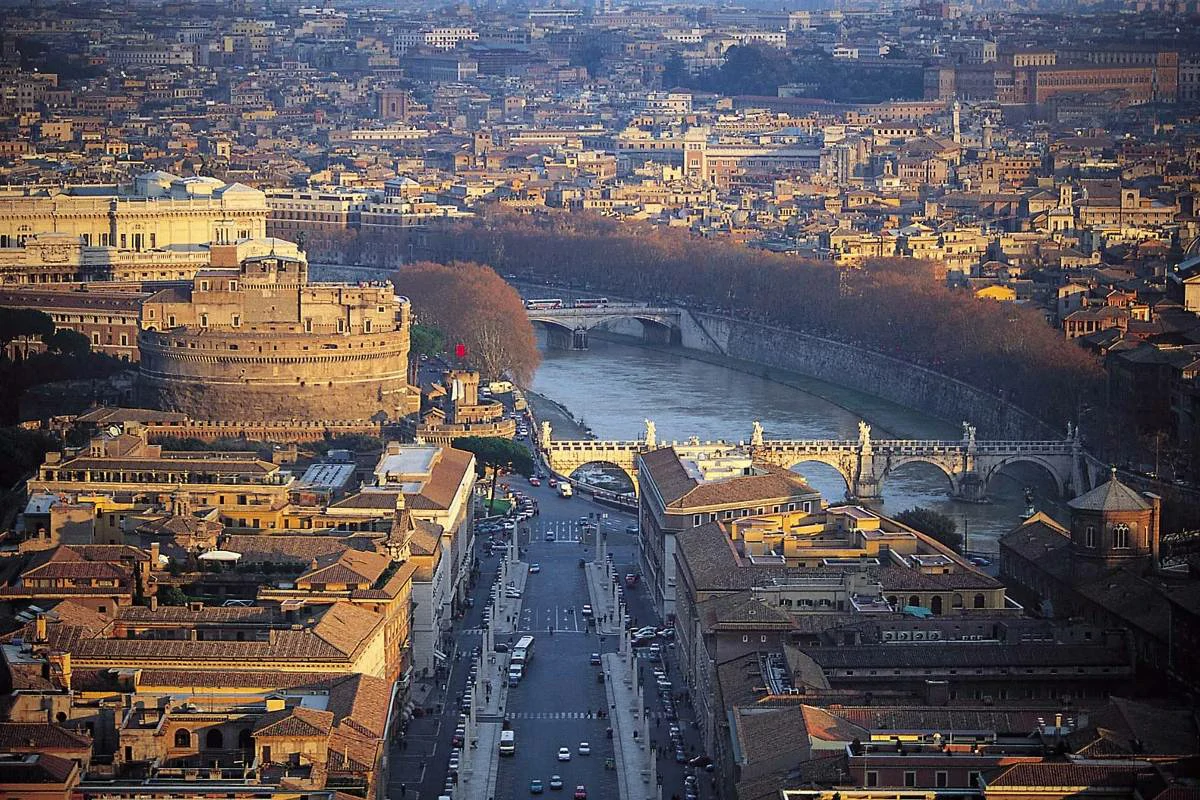
Winter in Rome offers a quieter, more intimate experience of the Eternal City. The crowds thin out, prices generally lower, and a festive atmosphere descends over the city during the holiday season.
While the weather is cooler, there are plenty of sunny days and opportunities to enjoy Rome’s indoor treasures without the summertime bustle.
Weather in Rome during winter
Winter temperatures in Rome are generally mild, hovering between 40-55°F (4-13°C). Expect a mix of sunny days and some rain showers.
While snowfall is rare in the city center, an occasional dusting of the surrounding hills adds a touch of magic.
Winter events, Christmas, and New Year’s in Rome
The winter season in Rome is marked by a series of celebrations:
Christmas Markets: Piazzas throughout the city, particularly Piazza Navona, transform into enchanting Christmas markets with handcrafted gifts, festive treats, and twinkling lights.
Nativity Scenes: Churches and public squares display elaborate nativity scenes, some featuring life-sized figures.
Christmas in the Vatican: Attend a special Christmas Eve mass at St. Peter’s Basilica or experience the Pope’s Christmas Day blessing.
New Year’s Eve: Rome celebrates New Year’s Eve with concerts, fireworks displays, and lively street parties.
Why winter can be a special time to visit Rome
Fewer Crowds: Experience a less crowded Rome, especially in January and February, allowing for shorter lines at major attractions and more leisurely museum visits.
Off-Season Prices: Hotels and flights tend to be more affordable compared to other times of the year.
Cozy Atmosphere: Enjoy the warm glow of cafes, sip hot chocolate in a charming piazza, and savor hearty winter dishes in cozy trattorias.
Cultural Riches: Rome’s museums, galleries, and churches offer comfortable indoor respite on cooler days.
Festivals and Concerts: Winter brings a calendar of special events, from opera performances to classical music concerts.
Elena De Santis Expert Opinion
“Winter in Rome unveils a different side of the city, one filled with traditional charm and unexpected delights.” – Elena De Santis, Rome-based art historian.
Tips for Visiting Rome in Winter
- Pack for Layers: Weather can be unpredictable. Bring warm layers, a waterproof jacket, and comfortable shoes for cobblestone streets.
- Embrace Indoor Delights: Dedicate time to exploring Rome’s incredible museums, churches, and art galleries.
- Plan for Holiday Closures: Some shops and restaurants may have modified hours or close during the Christmas and New Year’s holidays.
- Experience the Festive Season: If you’re visiting during December, immerse yourself in the Christmas spirit at markets, concerts, and events.
- Consider a Winter Getaway: Take advantage of the lower crowds and prices for a romantic weekend break or a short cultural escape.
Additional Considerations
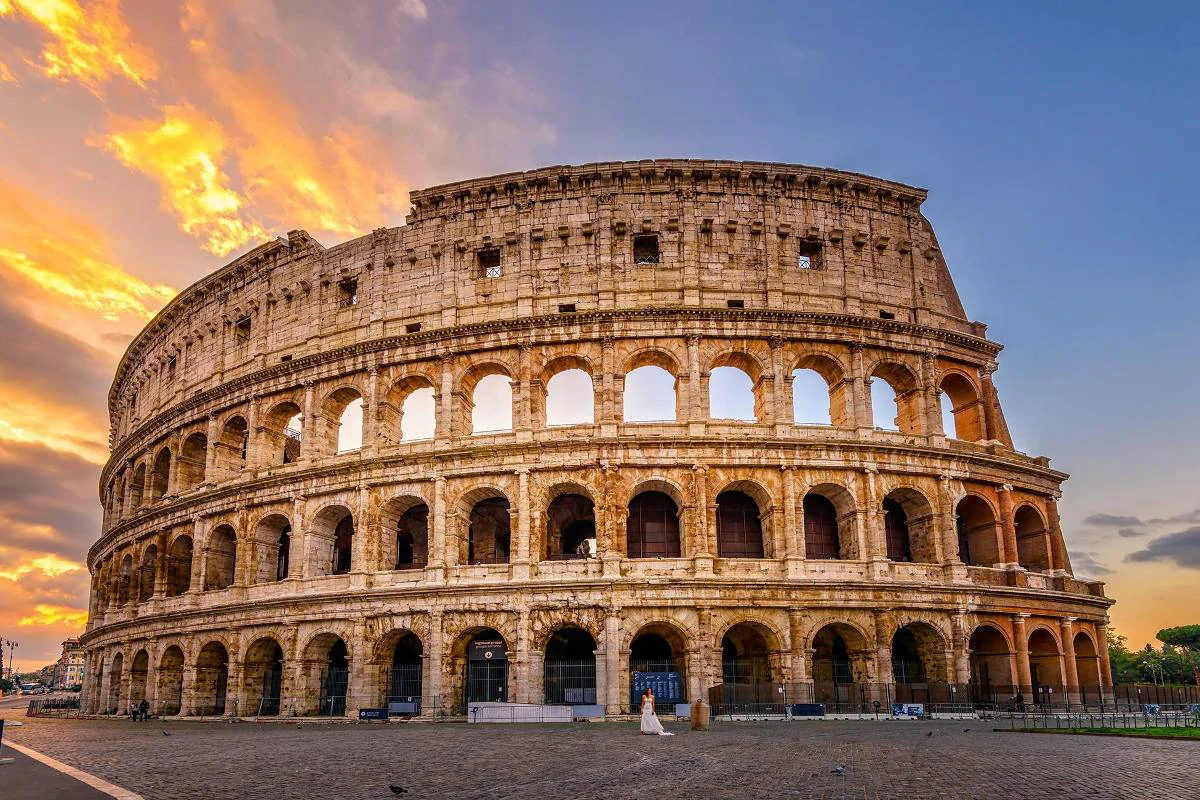
When deciding on the best time to visit Rome, it’s essential to go beyond just the seasons and consider factors that will shape your overall experience:
1. Crowds and Tourism
Peak season vs. shoulder season
Rome’s peak tourist seasons are summer (June-August) and the period around Easter and Christmas holidays.
During these times, expect larger crowds at all the major sights, long lines, and higher prices.
Shoulder seasons (spring and fall) offer a wonderful balance with fewer people and more pleasant weather.
How crowds affect your experience
Large crowds can impact your overall enjoyment of Rome. Popular attractions like the Vatican Museums and the Colosseum can become overwhelmed, leading to longer waits and a less intimate experience.
Booking advance skip-the-line tickets is essential, especially during peak season.
Choosing a less crowded time to visit allows for a more leisurely pace and the opportunity to truly soak in the atmosphere of the city.
2. Prices and Budgeting
Price fluctuations across seasons
Prices for flights and accommodations generally rise during the peak tourist seasons and fall during the shoulder and winter periods.
If you’re on a budget or looking for value, traveling outside of the busiest times can offer significant savings.
Finding deals and saving money
Book Early: Especially for peak season, booking flights and accommodations well in advance can unlock better prices.
Shoulder Season Advantage: Opting for spring or fall usually provides more affordable options.
Consider Apartments: For longer stays or groups, apartment rentals can be more cost-effective than hotels.
3. Your Travel Preferences
What type of Rome experience do you want? Consider the following when determining the best time for your trip:
Crowd Tolerance: If large crowds bother you, avoid peak season and holidays. Opt for winter if you’re comfortable with cooler weather and want a very quiet experience.
Activity & Event Focus: If your heart is set on specific summer festivals or Christmas traditions, your travel dates may be pre-determined.
Relaxed vs. Active: For a slower-paced trip focused on strolling and soaking up the atmosphere, shoulder seasons or winter are ideal. Summer might suit you better if you’re an early riser and want to pack in lots of sightseeing.
Food Lover: Seasonal produce adds a unique dimension. Spring offers fresh vegetables, fall the bounty of the harvest, and winter hearty comfort dishes.
Marco Mancini Expert Opinion
“The best time to visit Rome is the time that works best for you! Consider your budget, crowd tolerance, and what kind of experience you’re hoping for to make the most of your trip.” – Marco Mancini, Rome-based travel advisor.
Conclusion
Rome has a unique allure that transcends seasons. While the “best” time to visit inherently depends on your individual priorities, here’s a recap to guide your decision:
- Spring and Fall: The ideal mix of pleasant weather, manageable crowds, and exciting events make these shoulder seasons fantastic choices for most travelers.
- Summer: If you’re prepared for heat and crowds, summer offers vibrant energy, long sunny days, and a packed events calendar.
- Winter: Experience a quieter Rome, festive holiday celebrations, and lower prices for those looking for a budget-friendly trip.
No matter when you choose to go, planning is crucial. Booking accommodations and attractions in advance, especially during peak seasons, will save you time and potential disappointment. Be prepared for the weather of your chosen season and embrace the distinct charms that each period reveals.
FAQs
Q: What is the absolute cheapest time to visit Rome?
Generally, late fall (November) through early spring (February-March), excluding the Christmas and New Year’s period, offers the best potential for finding deals on flights and accommodations.
Q: Is Rome busy all year round?
Rome is a major tourist destination and attracts visitors throughout the year. However, peak season crowds are significantly larger than those found off-season. Even in quieter months, it’s advisable to book popular attractions in advance.
Q: I only have a few days – which season is best for a short trip?
Shoulder seasons (spring and fall) are ideal for shorter trips. The weather is usually pleasant, and you’ll still experience the city’s energy without the overwhelming summer crowds.
Q: Are there any resources to help me plan my trip to Rome?
Absolutely! Here are a few helpful resources:






